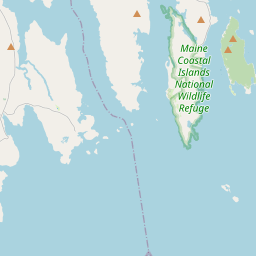Sieur de Monts Spring: The Heart of Acadia National Park
Historical marker location:






1872: Yellowstone National Park is established as the first national park in the United States and widely recognized as the first national park in the world.
1890: Yosemite National Park is established in California, protecting its iconic landscapes and natural wonders.
1916: The National Park Service (NPS) is created as a federal agency responsible for managing and preserving national parks. Stephen Mather becomes the first director of the NPS.
1919: Grand Canyon National Park is established in Arizona, safeguarding its immense and awe-inspiring canyon.
1926: Great Smoky Mountains National Park is established, becoming the most visited national park in the United States.
1933: President Franklin D. Roosevelt establishes the Civilian Conservation Corps (CCC) as part of his New Deal program. The CCC plays a crucial role in the development and conservation of national parks, employing thousands of young men in projects such as trail construction, reforestation, and infrastructure improvements.
1964: The Wilderness Act is passed, protecting designated wilderness areas within national parks and other public lands, ensuring their preservation in their natural state.
1970: The National Environmental Policy Act (NEPA) is signed into law, mandating environmental impact assessments for federal projects, including those within national parks.
1980: The Alaska National Interest Lands Conservation Act is passed, expanding the national park system and adding significant areas of land in Alaska, including the establishment of Gates of the Arctic National Park and Preserve.
2009: President Barack Obama signs the Omnibus Public Land Management Act into law, designating several new national parks and expanding existing ones, such as Joshua Tree National Park and Zion National Park.
Present: The U.S. National Park system has grown to include over 60 designated national parks, as well as national monuments, preserves, seashores, and historic sites. These protected areas attract millions of visitors each year and serve as vital conservation areas for biodiversity, natural wonders, cultural heritage, and outdoor recreation.
The establishment and continued expansion of the U.S. National Parks reflect a commitment to preserving and sharing the country's unique natural and cultural treasures for future generations.
Maine was the site of the worst maritime disaster in U.S. history: The worst maritime disaster in U.S. history occurred off the coast of Maine in 1914, when the passenger ship SS Eastland capsized, killing 844 people. The disaster was caused by overcrowding and instability due to design flaws.
In the 18th century, Hancock County saw an influx of European settlers, predominantly from England and Scotland. The region played a significant role in the American Revolution, with many local residents participating in the war effort. In 1789, Hancock County was officially established, named after John Hancock, a prominent Founding Father and the first signer of the Declaration of Independence.
During the 19th century, Hancock County experienced rapid growth and development. Industries such as fishing, shipbuilding, and lumbering thrived, thanks to the county's abundant natural resources and access to shipping routes. The city of Ellsworth became the county seat and a major center of commerce. Tourism also began to play a significant role, with wealthy visitors coming to admire the beautiful coastal landscapes and enjoy the summer resorts and cottages that sprang up along the shores.
In the 20th century, Hancock County continued to evolve. The decline of traditional industries such as fishing and shipbuilding led to a shift towards a more service-based economy, with an emphasis on tourism, education, and healthcare. The county is also home to Acadia National Park, one of the most visited national parks in the United States, which further bolstered the region's popularity as a tourist destination. Today, Hancock County remains a vibrant and picturesque area, offering a blend of historical charm and natural beauty.
Hancock County Timeline
This timeline provides a glimpse into the major events and milestones that have shaped the history of Hancock County, Maine.
- 1604: French explorer Samuel de Champlain visits the area now known as Hancock County.
- 1613: The French establish a trading post on Mount Desert Island.
- 1629: The French trading post is destroyed by the English.
- 1763: The Treaty of Paris ends the French and Indian War, and the area becomes part of the British colony of Massachusetts.
- 1765: The town of Hancock is incorporated.
- 1789: The District of Maine secedes from Massachusetts and becomes part of the United States.
- 1789-1820: The area experiences rapid settlement and growth.
- 1827: The town of Ellsworth is incorporated.
- 1848: The town of Bar Harbor is incorporated.
- 1852: The town of Bucksport is incorporated.
- 1861-1865: The American Civil War affects Hancock County, with many residents serving in the Union Army.
- 1870s: The region becomes a popular tourist destination, attracting visitors from across the United States.
- 1909: Acadia National Park is established, protecting large areas of Mount Desert Island.
- 1918: The Great Fire of 1918 devastates large parts of Hancock County, including Bar Harbor.
- 1947: The town of Stinson Beach is incorporated.
- 1959: The town of Blue Hill is incorporated.
- Present: The region continues to thrive as a popular tourist destination, known for its natural beauty and outdoor recreational opportunities.